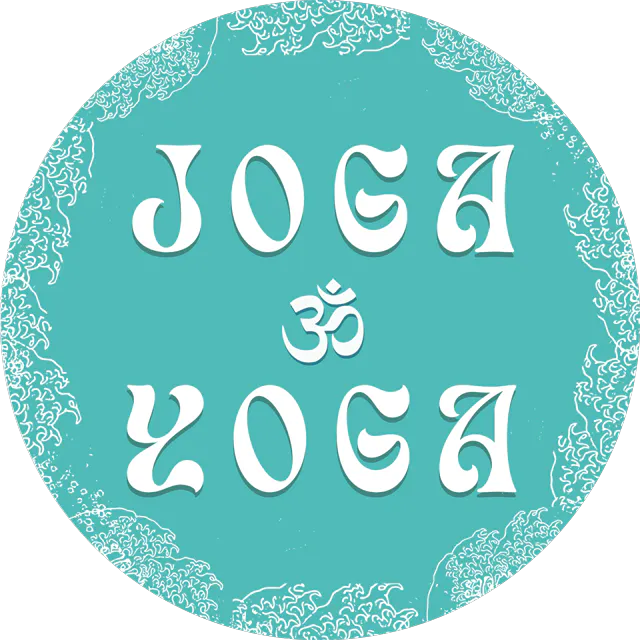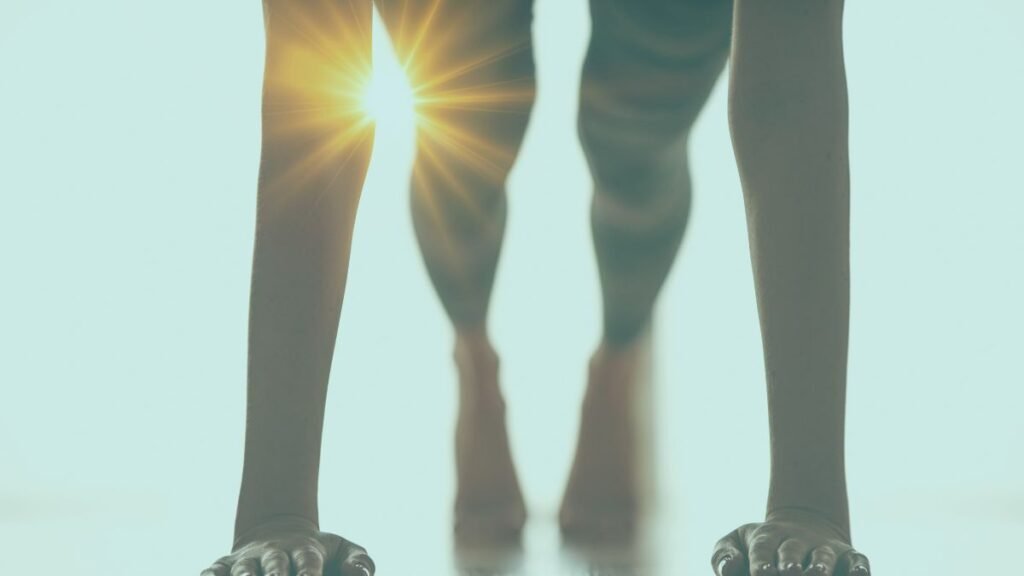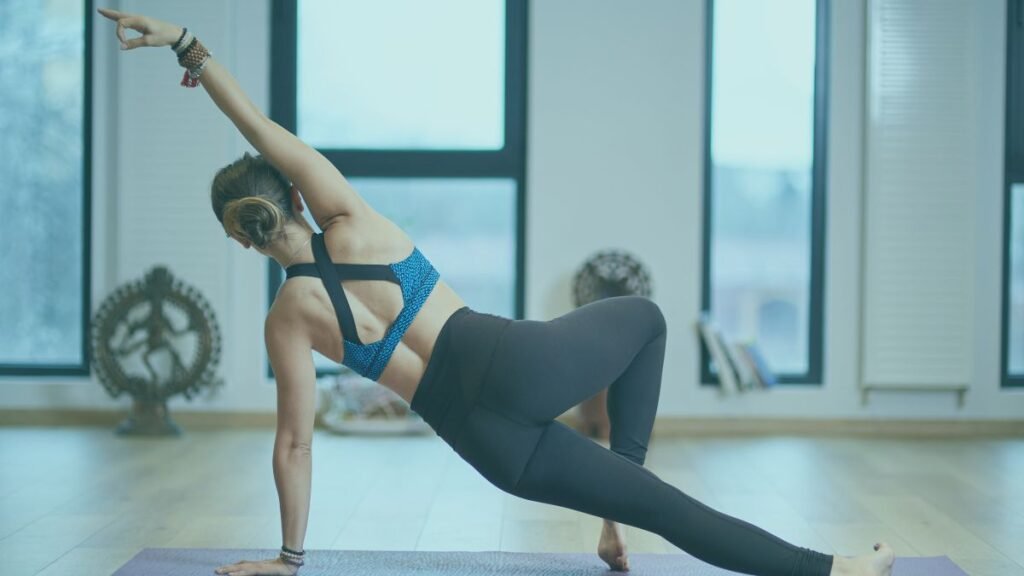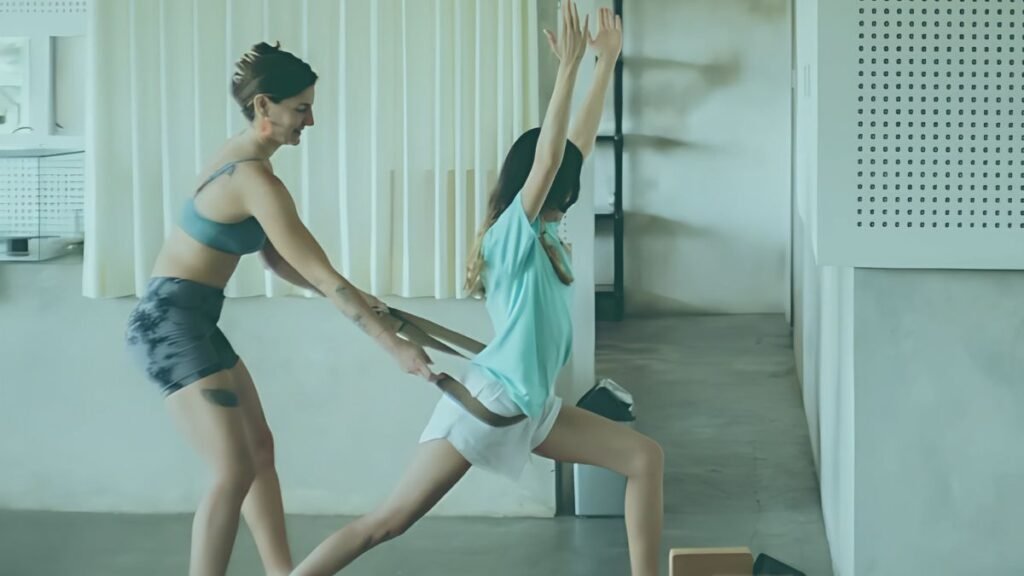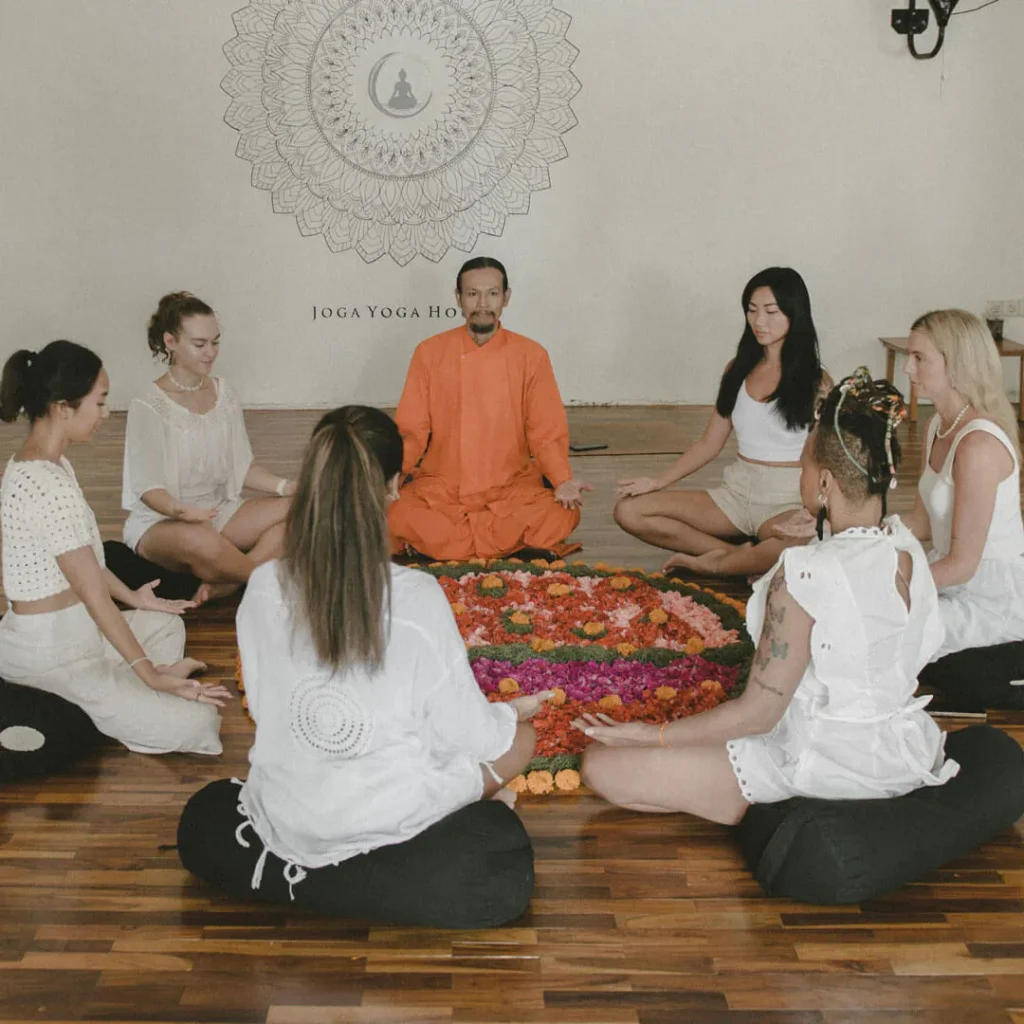What Is Asana Yoga?
Asana yoga is the practice of physical postures (asanas) that form the foundation of modern yoga. The term “asana” means “seat” or “posture” in Sanskrit. In yoga, asana refers to the series of body positions designed to promote strength, flexibility, balance, and a calm mind. Asana yoga is central to both Hatha and modern vinyasa practices, preparing the body for meditation and supporting overall wellness.
Related: Guide to Yoga Terms: Understand Yoga Lingo
The History of Asana Yoga (origins, evolution, and connection to Hatha Yoga)
Asana yoga’s roots trace back thousands of years to ancient India, where it developed as a crucial aspect of Hatha Yoga. The earliest references appear in classical texts like Patanjali’s Yoga Sutras (circa 400 CE), which emphasize asana as a path to physical stability and mental clarity. Originally, asanas were simple seated positions for meditation. Over centuries, the practice evolved to include a wide variety of postures—standing, balancing, twisting, and inverted—forming the backbone of today’s diverse yoga styles.
Hatha Yoga Connection:
Hatha yoga is the main traditional style emphasizing asana practice, breathwork (pranayama), and purification. Asana yoga today often refers to this broader, balanced approach. Learn more: What is Hatha Yoga?
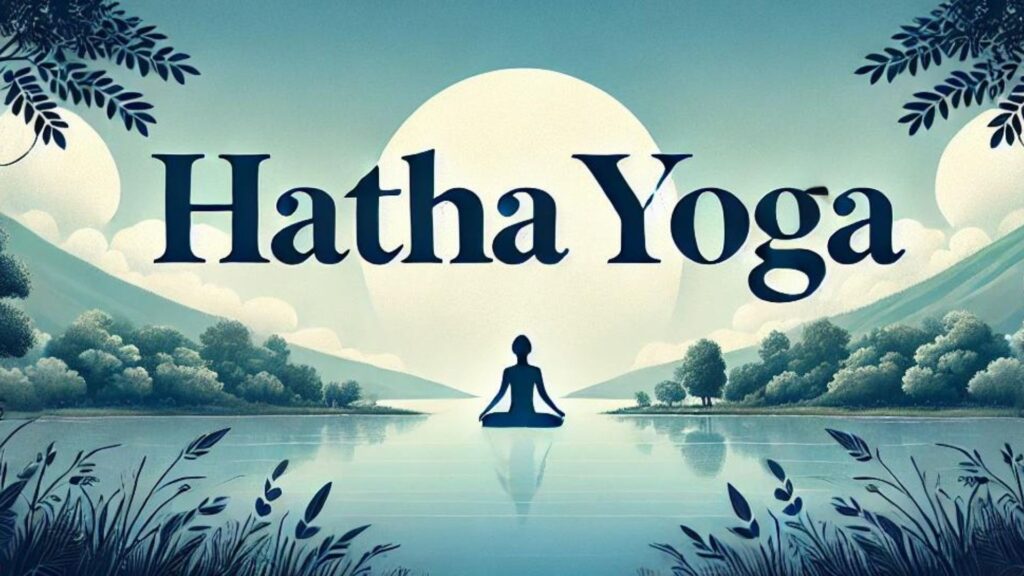
The Meaning of “Asana” in Modern Yoga
Today, “asana” is synonymous with yoga poses. In modern yoga studios worldwide, asana yoga covers everything from gentle restorative postures to advanced arm balances and inversions. While asana is only one limb of the Eight Limbs of Yoga, it’s the most visible and widely practiced, serving as a gateway to deeper meditation, breathwork, and self-understanding.For a deeper dive into the philosophical roots and Eight Limbs, see:
Ashtanga Yoga: The 8 Limbs to Transform Your Yoga Practice and Life
Why Practice Asana Yoga?
Physical Benefits (strength, flexibility, rehabilitation)
Practicing asana yoga provides a wide range of physical benefits that support overall wellness and healthy living:
- Strength and Toning: Regular asana practice helps build muscle strength and tone your entire body. Poses like Downward Dog and Warrior variations engage multiple muscle groups, building endurance and improving posture.
- Flexibility: Asana yoga increases flexibility in the muscles and joints. Even simple poses like Cat-Cow and Cobra gradually open tight areas, reduce stiffness, and help prevent injuries.
- Rehabilitation and Recovery: Gentle asanas support rehabilitation for injuries and chronic pain by encouraging safe movement, improving circulation, and reducing inflammation. Learn more about yoga for back pain and posture in our Yoga for Posture and Back Pain guide.
Mental and Emotional Benefits (stress relief, focus, emotional stability)
Asana yoga is just as beneficial for the mind as for the body:
- Stress Relief: The mindful movement and controlled breathing in asana yoga activate the body’s relaxation response, helping to reduce stress and anxiety. Relaxing poses like Child’s Pose and Savasana are especially calming.
- Improved Focus: Focusing on breath and alignment during poses sharpens your concentration and mental clarity, on and off the mat.
- Emotional Stability: Regular practice encourages emotional balance, self-awareness, and resilience. For deeper strategies, see our tips for Yoga for Overthinking and Yoga for Stress Relief.
Asana Yoga vs. Other Yoga Styles
| Attribute | Asana Yoga | Vinyasa Yoga | Hatha Yoga | Kundalini Yoga |
| Core Focus | Physical postures, alignment, breath | Flowing sequence of asanas & breath | Balance of postures, breath, & stillness | Energy, breath, mantra, meditation |
| Practice Style | Static holds and active movement | Continuous, dynamic flow | Slower pace, holding each pose | Kriya, breathwork, chanting |
| Benefits | Strength, flexibility, mind-body balance | Cardiovascular fitness, flexibility | All-round wellness | Spiritual awakening, energy balance |
| Level Suitability | All levels, poses can be modified | Moderate to advanced, more dynamic | Very beginner-friendly to moderate | Moderate to advanced, spiritual focus |
| Typical Class Length | 45–75 minutes | 45–75 minutes | 60–90 minutes | 60–90 minutes |
| Best For | Building strength, flexibility, relaxation | Endurance, weight loss, stamina | Foundational skills, balance | Deep meditation, chakra work |
Explore more yoga styles in our Types of Yoga overview.
Asana Yoga for Beginners
What Makes a Pose “Beginner”?
A “beginner” asana is accessible to most people, focuses on basic alignment, and avoids putting too much strain on joints or requiring extreme flexibility. Beginner poses help you build a safe foundation, understand breath, and develop body awareness before progressing to more challenging postures.
Essential Beginner Poses (with step-by-step mini-guides):
Mountain Pose (Tadasana)
- Stand tall, feet together, arms by your sides.
- Ground through your feet, engage your thighs, and lengthen your spine.
- Inhale, raise your arms overhead, palms facing in.
- Hold for several breaths, focusing on alignment and even weight distribution.
Benefits: Improves posture, builds awareness, strengthens legs.
Downward Dog (Adho Mukha Svanasana)
- Start on hands and knees.
- Lift hips, straighten legs, forming an inverted “V.”
- Spread fingers wide, press heels toward the mat.
- Keep knees slightly bent if hamstrings are tight.
Benefits: Stretches back, legs, shoulders; strengthens arms and core.
Child’s Pose (Balasana)
- Kneel, big toes touching, knees apart.
- Sit back on heels, reach arms forward, forehead to mat.
- Breathe deeply, relaxing your whole body.
Benefits: Relieves tension, stretches back, calms the mind.
Cobra Pose (Bhujangasana)
- Lie on your stomach, hands under shoulders.
- Press through hands, lift chest, elbows close to body.
- Keep shoulders relaxed, gaze forward.
Benefits: Strengthens spine, opens chest, energizes.
Cat-Cow (Marjaryasana-Bitilasana)
- On hands and knees, wrists under shoulders, knees under hips.
- Inhale: arch back (Cow), lift tailbone and chest.
- Exhale: round spine (Cat), tuck chin, draw belly in.
- Move slowly, synchronizing with breath.
Benefits: Warms up the spine, improves flexibility, relieves tension.
For more: See Beginner Yoga: Tips & Sequences.
Safety & Modifications for Beginners
- Props: Use yoga blocks, straps, or folded blankets for support and comfort.
- Alignment: Focus on posture and avoid pushing too deep—quality over quantity.
- Listen to Your Body: Stop if you feel pain, and don’t compare yourself to others.
- Modify: Bend knees in Downward Dog or use a cushion in Child’s Pose if needed.
- Rest: Take breaks in Child’s Pose whenever needed.
Learn more about safe, effective yoga: Guide to Yoga Anatomy.
FAQ: “How do I start asana yoga?”
How do I start Asana yoga as a beginner?
Begin with simple, foundational poses that prioritize alignment and breath. Practice regularly—start with 10–20 minutes a few times a week. Use props as needed, and follow a class or online video for clear guidance. Focus on awareness, patience, and listening to your body. For a complete introduction, visit our Beginner Yoga Guide or consider joining a beginner-friendly yoga class for support.
Intermediate Asana Yoga
What Makes a Pose “Intermediate”?
Intermediate asanas build on foundational poses by requiring more strength, balance, coordination, and flexibility. These poses challenge your stability, introduce more complex transitions, and help you explore deeper ranges of motion. Typically, intermediate poses combine multiple movement patterns or require you to balance on one limb, engage the core, or hold postures for longer periods.
Key Intermediate Poses (with techniques, challenges, tips)
Warrior II (Virabhadrasana II)
- Technique: Start in a wide stance. Turn your right foot out 90°, left foot slightly in. Bend your right knee over the ankle. Extend arms out, gaze over right hand.
- Challenges: Maintaining knee alignment and hip opening.
- Tips: Press into both feet, keep shoulders relaxed, engage core for stability.
Triangle Pose (Trikonasana)
- Technique: From standing, step feet apart. Turn right foot out, reach right arm forward and lower to shin or block; left arm reaches up.
- Challenges: Keeping chest open and both legs straight.
- Tips: Avoid collapsing forward—use a block if needed, and focus on opening the top shoulder.
Boat Pose (Navasana)
- Technique: Sit with knees bent, feet flat. Lean back, lift feet, extend legs if possible, and reach arms forward.
- Challenges: Balancing without straining the lower back.
- Tips: Keep chest lifted, use bent knees if hamstrings are tight, and engage core muscles.
Half Moon (Ardha Chandrasana)
- Technique: From Warrior II, shift weight onto front foot, lift back leg, and reach front arm to the floor or block, top arm to the sky.
- Challenges: Balancing and keeping hips open.
- Tips: Use a block for support and gaze at the floor for balance until more confident.
Camel (Ustrasana)
- Technique: Kneel with knees hip-width. Place hands on lower back, lift chest, and gently arch backward, reaching for heels.
- Challenges: Avoiding lower back compression and keeping neck safe.
- Tips: Engage glutes and core, keep hips over knees, and don’t force the neck back.
For additional cues, see our Guide to Yoga Anatomy or Yoga Class in Canggu for in-person guidance.
Overcoming Common Plateaus & Progressing Safely
- Listen to Your Body: Avoid pushing into pain or forcing flexibility.
- Use Props: Blocks, straps, and walls can make intermediate poses more accessible and safe.
- Focus on Transitions: Practice moving smoothly between poses to improve control and balance.
- Consistency Matters: Practice regularly, but allow rest and recovery to avoid overuse injuries.
- Seek Feedback: Attend a class or ask a teacher for personalized tips.
For more tips on safe progression, visit Yoga for Posture and Back Pain and Beginner Yoga.
Advanced Asana Yoga
What Is “Advanced Asana”?
An “advanced asana” typically demands a high level of strength, flexibility, balance, and body awareness. These poses often combine inversion, deep backbending, arm balancing, or a blend of all three. Advanced asanas are for practitioners with a strong foundation and consistent practice—never rush into them without preparation.
Advanced Asana Queries
Common searches:
- Advanced asana yoga
- Advanced asana poses
- Peak poses in yoga
Related:
See our Top 10 Most Difficult Yoga Poses for more challenges.
Advanced Poses (with safety/preparation)
Handstand (Adho Mukha Vrksasana)
- Prep: Build wrist and shoulder strength with Downward Dog and Plank.
- Safety: Start against a wall; keep arms straight and core engaged.
- Key Tip: Practice “kick-ups” and work with a spotter when possible.
King Pigeon (Eka Pada Rajakapotasana)
- Prep: Warm up with hip openers and backbends (Cobra, Bridge).
- Safety: Use a strap around the back foot if you cannot reach.
- Key Tip: Never force the knee—ease in with props or preparatory versions.
Scorpion (Vrschikasana)
- Prep: Build confidence in Forearm Stand (Pincha Mayurasana).
- Safety: Only attempt when comfortable with inversions; use a wall.
- Key Tip: Focus on back flexibility and control, not just strength.
Firefly (Tittibhasana)
- Prep: Increase hamstring flexibility and core strength with Forward Folds and Boat Pose.
- Safety: Warm up thoroughly; avoid overextending the elbows.
- Key Tip: Keep the weight forward and press hands strongly into the mat.
Full Wheel (Urdhva Dhanurasana)
- Prep: Practice Bridge Pose and shoulder opening drills.
- Safety: Protect wrists and shoulders; engage legs and core.
- Key Tip: Lift with your legs as much as your arms to avoid back strain.
Tips for Progression, Spotting, and Injury Prevention
- Warm Up Well: Always prepare the body with easier poses before attempting advanced asanas.
- Use Props: Walls, straps, blocks, and spotters help you practice safely and with good alignment.
- Work with a Teacher: A certified instructor can give you feedback and adjust your form to prevent injuries.
- Respect Your Limits: Progress at your own pace—master the basics before moving to advanced postures.
- Rest and Recover: Schedule rest days and balance intense practices with restorative sessions.
Curious about next-level practice or teacher training? See our 300-Hour Yoga Teacher Training or Guide to Yoga Anatomy for a deeper understanding.
Sequencing Yoga Poses for a Balanced Practice
Principles of Effective Sequencing
Effective sequencing means ordering poses to safely warm up the body, peak in challenge, and cool down, creating a holistic practice. Start with gentle movements, progress to standing and balance poses, include a “peak” challenge (if desired), then finish with calming stretches and relaxation. Always consider breath and mindfulness as the unifying thread.
Sample Sequences (Beginner, Intermediate, Advanced)
Beginner Sequence:
- Cat-Cow (warm-up)
- Mountain Pose
- Downward Dog
- Warrior I
- Child’s Pose
- Savasana (final rest)
Intermediate Sequence:
- Sun Salutations (warm-up)
- Warrior II
- Triangle Pose
- Boat Pose
- Half Moon
- Seated Forward Bend
- Savasana
Advanced Sequence:
- Sun Salutation with arm balance options
- Warrior III
- Handstand or Firefly
- King Pigeon
- Full Wheel
- Reclined Twist
- Savasana
How to Build Your Own Sequence (entity HowTo/visual)
- Warm-Up: Begin with joint mobilization and gentle stretches.
- Build Intensity: Move to standing and balance poses.
- Peak Pose: Choose one main challenge (e.g., Camel, Half Moon, Handstand).
- Cool Down: Include hip openers, twists, and gentle forward bends.
- Final Relaxation: End with Savasana.
Tip: Keep transitions smooth and listen to your body at every stage.
Explore more on sequencing in our Beginner Yoga Guide.
FAQ: “How do I sequence yoga poses for [goal]?”
How do I sequence yoga poses for strength, flexibility, or stress relief?
- For strength: Emphasize standing poses and balances (Warrior series, Plank, Boat).
- For flexibility: Focus on longer holds in forward bends, hip openers, and gentle backbends.
- For stress relief: Use calming poses and longer, slower transitions—Child’s Pose, Legs Up the Wall, Savasana.
Therapeutic & Wellness Uses of Asana Yoga
Asanas for Back Pain
- Cat-Cow: Mobilizes the spine and relieves tension.
- Child’s Pose: Gently stretches the back and promotes relaxation.
- Sphinx Pose: Builds spinal strength with a gentle backbend.
See our dedicated guide: Yoga for Posture and Back Pain.
Asanas for Anxiety & Stress
- Legs Up the Wall (Viparita Karani): Calms the nervous system.
- Forward Fold (Uttanasana): Grounds the mind and relieves tension.
- Corpse Pose (Savasana): The ultimate reset for mind and body.
For mental well-being tips, try Yoga for Overthinking and Yoga for Stress Relief.
Asanas for Digestion & General Wellness
- Seated Forward Bend (Paschimottanasana): Stimulates digestion and relaxes the body.
- Wind-Relieving Pose (Pavanamuktasana): Eases bloating and promotes gut health.
- Twist Pose (Ardha Matsyendrasana): Massages abdominal organs and supports detoxification.
How Therapeutic Yoga Differs from Fitness Yoga
Therapeutic yoga prioritizes healing, gentle movement, and personalized modification, often in collaboration with health professionals. Fitness-oriented yoga may focus more on sweat, intensity, and physical goals. Both have value—choose your practice based on your personal needs.
For holistic approaches, see Somatic Exercise for Weight Loss and Yoga Diet & Nutrition.
Safety Tips for Practicing Asana Yoga
Alignment, Props, and Listening to Your Body
- Alignment: Follow instructions for joint safety and muscle engagement.
- Props: Use blocks, straps, and blankets for comfort and correct form.
- Body Awareness: Respect pain signals—never “push through” sharp discomfort.
See our Guide to Yoga Anatomy for deeper alignment cues.
Modifications for Injuries or Limited Mobility
- Modify poses as needed (e.g., bend knees, use a wall, sit on a block).
- Consult a certified teacher or health professional for custom guidance.
- Explore restorative and gentle yoga styles when recovering.
When to Rest and When to Progress
- Rest: Whenever you feel fatigue, dizziness, or pain—Child’s Pose is always an option.
- Progress: Only increase difficulty when you can maintain stable breath and alignment in easier versions.
FAQ: “How do I avoid injury in yoga asana practice?”
How do I avoid injury in yoga asana practice?
- Focus on form, not depth.
- Use props and ask for help.
- Warm up thoroughly, cool down after.
- Listen to your body: “If in doubt, leave it out.”
For more tips, see our Beginner Yoga Guide and Yoga Anatomy.
The Philosophy Behind Asana Yoga
Asana in the Eight Limbs of Yoga (Patanjali)
According to Patanjali’s Yoga Sutras, yoga is an eightfold path to self-realization. Asana (posture) is the third limb, following yama (ethical standards) and niyama (personal observances). The original purpose of asana was to create a stable, comfortable seat for meditation. In modern practice, asanas prepare the body and mind for deeper spiritual work by developing discipline, resilience, and physical ease.
Learn more about yoga’s eight limbs in Ashtanga Yoga: The 8 Limbs to Transform Your Yoga Practice and Life.
Spiritual Aspects and the Body-Mind Connection
Asana yoga is more than just exercise. Each pose is an opportunity to connect body and mind, encouraging mindfulness, focus, and present-moment awareness. This mind-body connection is a key principle in all yoga, allowing practitioners to transform physical movement into a form of moving meditation. Regular practice can deepen your sense of inner calm and spiritual connection.
Integrating Asana with Meditation
Asanas are traditionally used to prepare the body for seated meditation, reducing restlessness and physical discomfort so the mind can turn inward. Integrating asana practice with meditation and pranayama (breathwork) can enhance your overall sense of balance, focus, and spiritual growth.
Explore more: Yoga Meditation Techniques: Benefits and Practices.
Asana Yoga FAQ
What is asana yoga?
Asana yoga refers to the practice of physical yoga postures (asanas) designed to build strength, flexibility, and mental clarity. It is a key component of Hatha Yoga and modern yoga practice.
How do I start asana yoga as a beginner?
Begin with simple, accessible poses and focus on breath and alignment. Use beginner-friendly resources like the Beginner Yoga Guide or join a class with a certified instructor for step-by-step support.
What are advanced asanas?
Advanced asanas are challenging yoga postures that require strength, balance, flexibility, and body awareness, such as Handstand, King Pigeon, and Full Wheel. These poses should be approached gradually, with proper preparation and guidance. See Top 10 Most Difficult Yoga Poses.
How do you sequence yoga poses?
Effective sequencing begins with gentle warm-ups, moves through standing and balance poses, peaks with a challenging asana, and ends with cooling stretches and relaxation. Match your sequence to your goals (strength, flexibility, stress relief) and always listen to your body.
Is asana yoga safe for everyone?
Asana yoga can be practiced by most people when appropriate modifications and safety guidelines are followed. Always consult a healthcare professional if you have medical concerns or injuries, and start with beginner classes if you’re new.
Difference between asana and other yoga forms?
“Asana yoga” focuses specifically on physical postures, while other forms (like Kundalini or Yin) may emphasize energy work, long holds, or meditation. Most modern yoga styles incorporate asanas but may prioritize different goals or methods. Learn about Types of Yoga.
